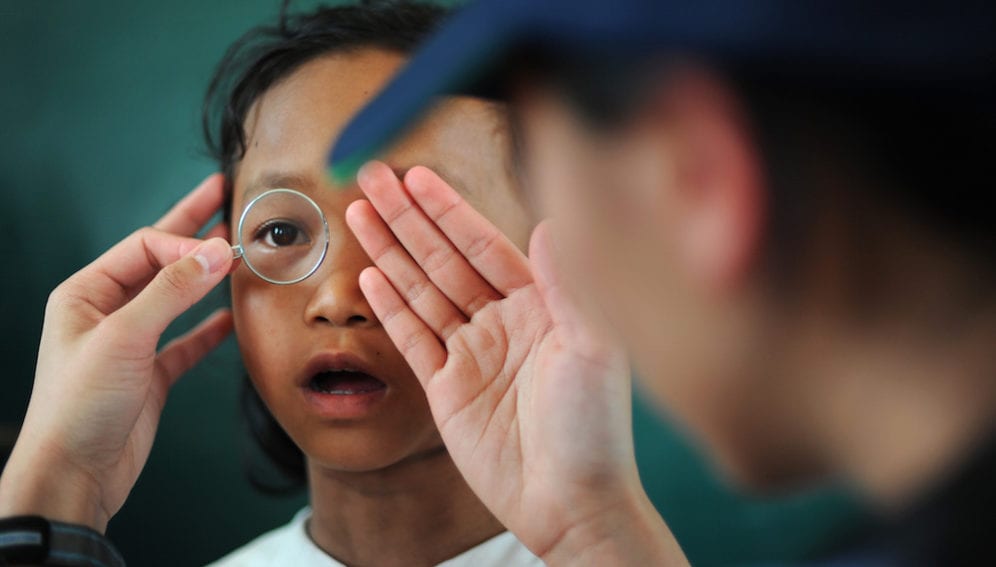By: Neena Bhandari
Send to a friend
The details you provide on this page will not be used to send unsolicited email, and will not be sold to a 3rd party. See privacy policy.
[SYDNEY] Global health and development policies must focus on the 1.8 billion young people aged 10 to 24 years to reap a triple dividend that will benefit these adolescents today, into their adulthood and the next generation.
“This is the largest generation of adolescents that the world will ever see. Close to 90 per cent of them live in low- and middle-income countries,” says George Patton, chair of the Lancet Commission on Adolescent Health and Wellbeing which launched a report in London last week (10 May) to draw attention to the issue.
“If we make the right investments in their health and wellbeing, they will bring ‘demographic dividend’ for the world. If we fail to make investments, there is a risk these adolescents will become a disengaged, lost generation, which will lead to huge social disruption, poverty, mass migration and civil unrest,” Patton tells SciDev.Net.
While many programmes for adults and children below five years of age have improved health outcomes in recent decades, the adolescence stage — viewed as the healthiest time of life — has attracted fewer resources, resulting in the poorest health coverage of any group.
“Around two-thirds of the world's adolescents are growing up in countries where diseases of poverty (infectious disease, undernutrition, problems of reproductive health, HIV) or injury (homicide, road traffic injury) are a daily threat to health and wellbeing,” notes Patton, a professor in adolescent health research at the University of Melbourne, Australia.
“These are preventable problems with cost-effective solutions that we have failed to implement, such as providing comprehensive sexuality education, ready access to condoms and contraception, and imposing taxation on tobacco, alcohol and unhealthy foods,” he stresses.
To meet the unique needs of this vital age cohort, the report calls for a new approach that goes beyond the health sector to include the education, employment and governance sectors.
“We have demonstrated that investing in free, quality secondary education that meets not just academic [objectives] but also social and emotional needs brings huge gains in the cognitive capacities of adolescents and to their health and wellbeing. For every year of secondary education, there are fewer births for adolescent girls and fewer deaths for adolescent boys and girls,” adds Patton.
The report highlights the need to rethink legal frameworks to protect and empower young people, such as guaranteeing 18 years as the minimum age for marriage. It recommends using innovative technologies to engage young people and harness their potential to achieve the UN Sustainable Development Goals, echoing the recommendations of Every Woman, Every Child: Global Strategy for Women’s, Children’s, and Adolescents’ Health (2016-2030).
Susan Sawyer, director of the Centre for Adolescent Health at the Royal Children's Hospital in Melbourne, explains that the commission defines the adolescence age span of 10-24 years old for “biological and social reasons”.
“Historically, adolescence has been defined as starting with puberty and ending with a set of role transitions, such as marriage and parenthood that denote adulthood. Puberty is now starting earlier and the social role transitions are occurring later. Also, advances in neuroscience have shown that there is tremendous brain maturation that continues to occur until the mid-20s,” says Sawyer.
The Commission used data from the Global Burden of Disease study led by the Institute for Health Metrics and Evaluation at the University of Washington to quantify trends in ill health, disability and death in young people in 188 countries from 1990 to 2013.
This piece was produced by SciDev.Net’s South-East Asia & Pacific desk.
References
George Patton and others Our future: A Lancet commission on adolescent health and wellbeing (The Lancet, 9 May 2016)














